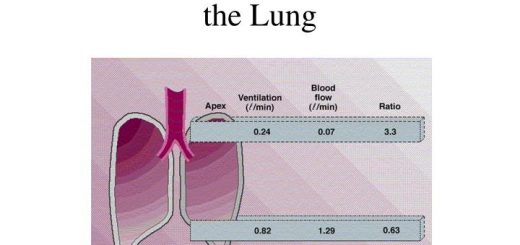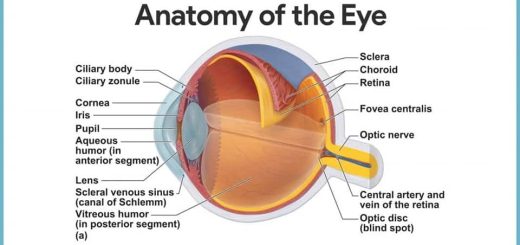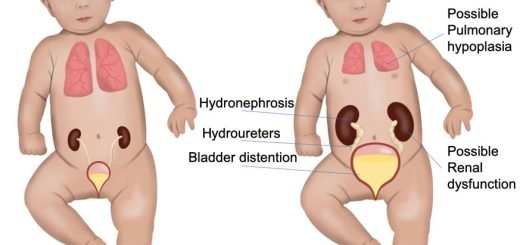Respiratory Chain Electron Transport Chain (ETC) components, control and inhibitors
The Respiratory Chain Electron Transport Chain (ETC) is the final common pathway in aerobic cells by which electrons derived from various substances are transferred to O2 to form H2O. ETC is formed of a series of electron carriers, which catalyze the transfer of electrons from reduced coenzymes to oxygen to form water. Part of the energy released is utilized for the synthesis of high-energy phosphate bonds (conversion of ADP+ Pi- ATP).
Components of the respiratory chain
The components of ETC are located in the inner mitochondrial membrane and it is formed of a series of complexes, coenzyme Q and cytochrome C. All members of the respiratory chain are proteins except coenzyme Q and exist as complexes (I → IV) that span the inner mitochondrial membrane:
Complex I is (NADH-:ubiquinone oxidoreductase, or NADH dehydrogenase). It is formed of Many polypeptides, FMN coenzyme, and Seven-iron sulfur centers (fes) which are necessary for the transfer of hydrogen atoms to the next member of the chain coenzyme Q. It catalyzes the transfer of electrons from NADH + H+ to coenzyme Q (ubiquinon), electrons or hydrogens are transferred from NADH to FMN then to different fes centers, and finally to UQ to form reduced UQH2.
Complex II: ( succinate: ubiquinone oxidoreductase) Is formed of Succinate dehydrogenase, Two iron-sulfur centers, and FAD coenzyme. It catalyzes the transfer of electrons or hydrogens from succinate to UQ to form UQH2.
Complex III: (Ubiquinoel: ferricytochrome C oxidoreductase.) is formed of Cytochrome, One fes center, and Cytochrome C1. It transfers electrons from UQ-H2 to cytochrome C with the release of two protons (2H+).
Complex IV: (ferrocytochrome C: oxygen oxidoreductase). It is formed of Two cytochromes (a &a3), and Two atoms of copper. It transfers electrons from cytochrome C to oxygen which then combines with the two H+ to form H₂O.
Cytochromes, each contain a heme group made of a porphyrin ring containing an atom of iron. the heme groups of Hb, the cytochrome iron atom is reversibly converted from its Fe+₂ to Fe+3 as a normal part of its function as a reversible carrier of electrons.
Coupling sites for oxidative phosphorylation & ATP synthesis:
- Coupling site I: lies between FMN & CO Q.
- Coupling site Il: lie between cytochrome b & C1.
- Coupling site III: lies at cytochrome a a3.
When a substrate is oxidized via NAD-linked dehydrogenase, three molecules of ATP are formed, while when a substrate is oxidized via a flavoprotein-linked dehydrogenase, only two molecules of ATP are
Mechanism of oxidative phosphorylation (Mitchell’s chemiosmotic theory)
It postulates that oxidation of components of the respiratory chain leads to the generation of protons inside the mitochondrial matrix that are pumped to the outside of the inner membrane. This results in the accumulation of protons outside the inner membrane which in turn creates an electrochemical potential difference across the inner membrane leading to the formation of ATP from ADP and Pi by the enzyme ATP synthase which is present in the inner membrane.
It is formed of two subunits Fo & F1. The F0 subunit acts as a gate or channel for protons and F1 subunits for the synthesis of ATP. Complexes I, III, and IV act as proton pumps. F1 subunit of ATP synthase protrudes into the mitochondrial matrix, while FO presents in the inner mitochondrial membrane.
Control of Respiratory Chain
The respiratory chain is controlled by the levels of ADP and Pi as well as by the availability of ADP/ATP transporter.
Inhibitors of the respiratory chain
A) Inhibitors of the respiratory chain proper
They inhibit the respiratory chain at four sites:
- Site 1: between FeS and Q in complex I. It is inhibited by barbiturates, piericidin A (antibiotic), and rotenone (insecticide and fish poison).
- Site 2: between cytochrome b and cytochrome c1 in complex III. It is inhibited by antimycin and dimercaprol.
- Site 3: at cytochrome oxidase in complex IV. It is inhibited by hydrogen sulfide (H2S), carbon monoxide (CO), and cyanide.
- Site 4: between succinate dehydrogenase and Q in complex III. It is inhibited by carboxin.
B) Inhibitors of oxidative phosphorylation
They include Oligomycin which inhibits the transport of ADP into and the transport of ATP out of the mitochondria. Atractyloside is another inhibitor.
C) Uncouplers of oxidative phosphorylation
They dissociate oxidation in the respiratory chain from phosphorylation. As a result, oxidation becomes unlimited since it is not controlled by the concentration of ADP or Pi. They include 2,4 dinitrophenol, dinitrocresol, pentachlorophenol, thyroxine, Ca₂+, and m-chlorocarbonyl cyanide phenyl hydrazone (CCCP).
Oxidation of extramitochondrial NADH
NADH is produced in the cytosol during glycolysis in the reaction catalyzed by glyceraldehydes -3- phosphate dehydrogenase. This NADH can not enter the respiratory chain in the mitochondria because the inner mitochondrial membrane is impermeable to it, therefore, reducing equivalents are transferred from extramitochondrial NADH to the mitochondria by one of two shuttles;
- Glycerophosphate shuttle.
- Malate shuttle.
Capillary circulation, Regulation of vasomotion, tissue formation & Edema types & causes
Regulation of blood flow, Renin-angiotensin vasoconstrictor system & Vasodilator hormones
Physiology of the circulatory system & How does the circulatory system work
Blood vessels structure, function, layers, characteristics & How blood vessels work













